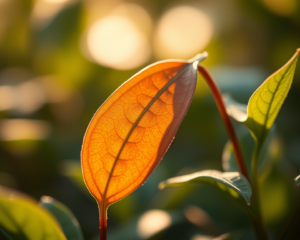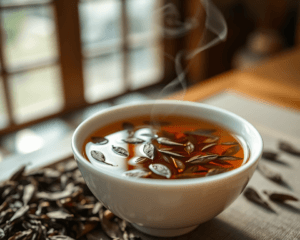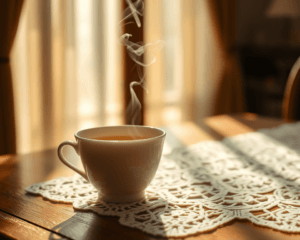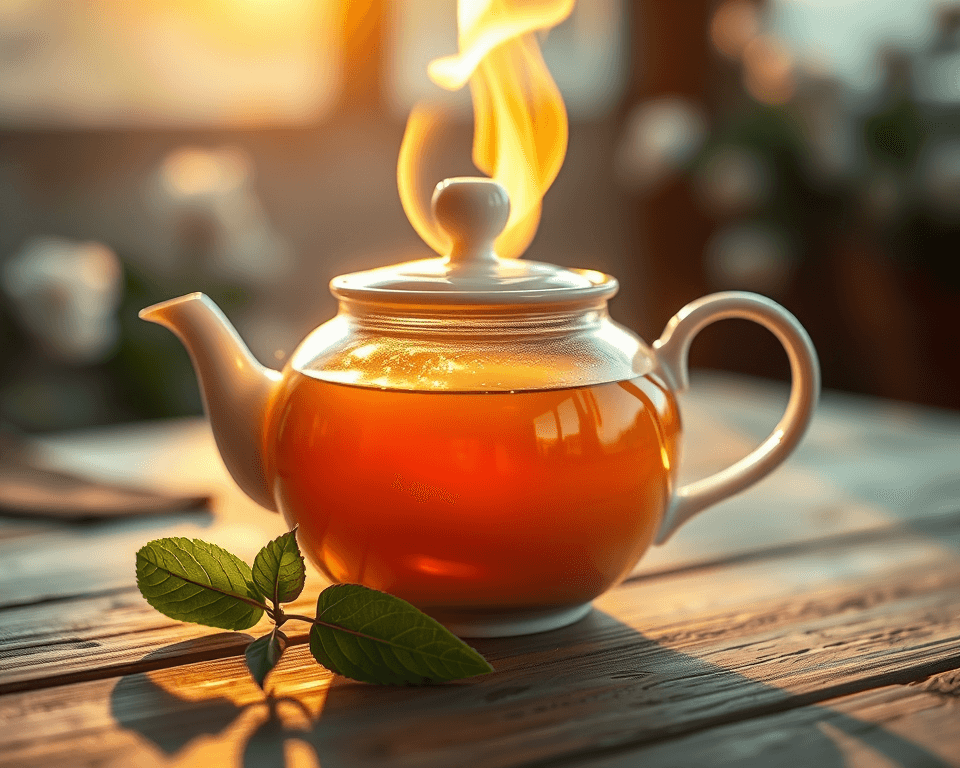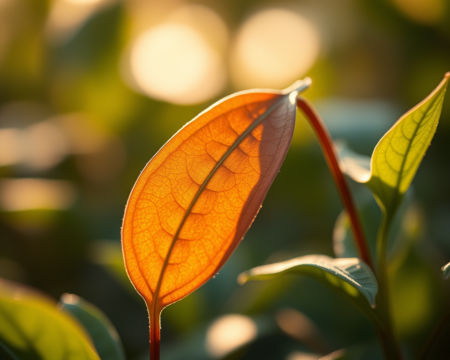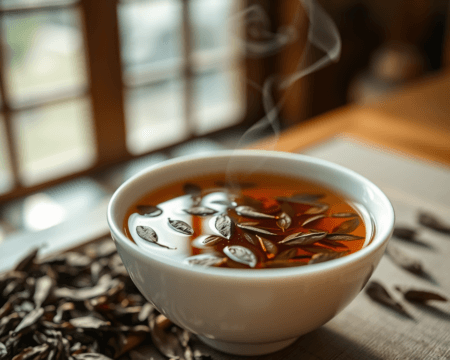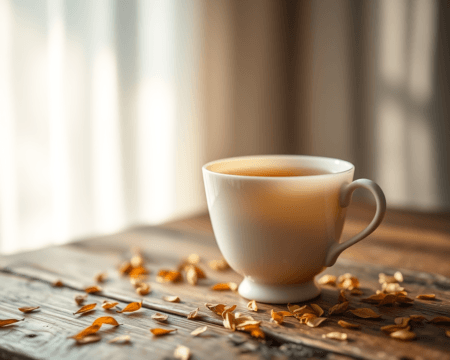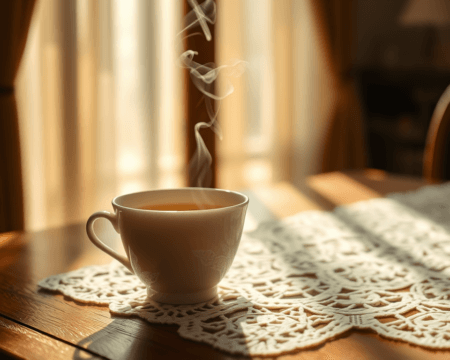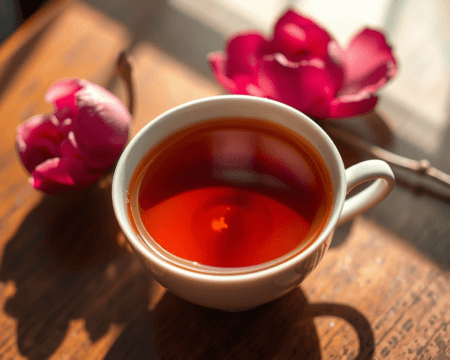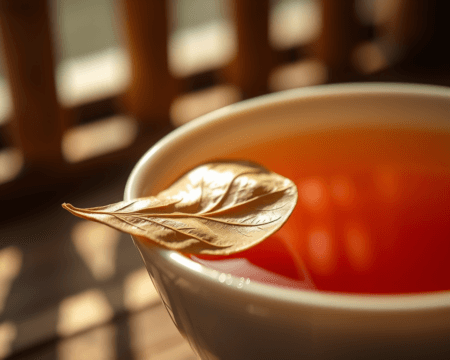There’s something undeniably magical about the process of brewing tea in a teapot. You get to engage all your senses – the aroma fills the air, the colors swirl, and that first sip? Pure bliss. If you’ve ever brewed tea and had it taste weak or bitter, trust me, you’re not alone. But fear not! With a little know-how and the right tools, you can master the art of tea brewing faster than you can say “Earl Grey.”
Key Takeaways
- Knowing your tea types and choosing the right teapot can transform your brewing experience and flavor.
- Water quality is just as important as the tea itself; don’t compromise here!
- Following proper brewing times and temperatures will help you avoid common mistakes that ruin your tea.
The Basics of Brewing Tea in a Teapot
Understanding the Components of a Teapot
Let me tell you, not all teapots are created equal. From porcelain to glass, each material affects your brew’s heat retention and flavor. For instance, porcelain teapots are great for black and herbal teas because they keep the heat well. On the flip side, a glass teapot lets you watch the tea dance as it brews, making it perfect for green and floral teas where color matters.
If you’re a fan of cast iron teapots, you’re looking at a powerhouse. They retain heat longer, which is fantastic for multiple steeps of oolong. And let’s not forget about stainless steel – durable and often comes with built-in infusers, making brewing a breeze.
Selecting the Right Tea for Your Teapot
Now, let’s talk tea. Depending on your flavor profiles, you’ll find a vast ocean of choices – black, green, oolong, herbal, even white tea. Always opt for loose leaf for the best experience. A little secret? Loose leaf tea generally has higher quality and flavor than its bagged counterpart.
What about the tea itself? If you’re into bold and robust flavors, black tea is your friend. For something slightly more subtle, go for green. Oolong offers that perfect sweet spot between the two. If you’re feeling adventurous, give herbal teas a shot; they have a world of flavors and benefits to explore.
Step-by-Step Instructions for Brewing Tea
Preparing the Teapot and Ingredients
Getting your teapot ready to rock is easier than you’d think. First, give it a good wash and rinse. You wouldn’t want any leftover dust from the shelf messing with your brew, right? Pre-warm your teapot by swirling some hot water in it – this retains heat and helps your tea steep effectively.
Next up, measure your tea. A general rule of thumb is one teaspoon of loose leaf tea per cup of water. Adjust based on strength preferences. Now, the water temperature is crucial. For black tea, aim for around 200°F; green teas ideally need cooler water – about 175°F.
Brewing Techniques for Different Types of Tea
Here’s where it gets good. Each tea type has its own brewing vibe.
- Black tea brewing generally needs about 3-5 minutes of steeping time.
- Green tea techniques require only 2-4 minutes; if you overdo it, you risk bitterness.
- Oolong infusion can vary: 3-5 minutes for a black oolong and 2-3 for green oolongs.
- Herbal steeping usually takes the longest, around 5-7 minutes.
Test your tea’s flavor at the minimum steeping time for the best results. If it tastes underwhelming, let it steep a tad longer; this sweet spot takes some experimentation but is so worth it.
Common Mistakes to Avoid When Brewing Tea
Identifying and Correcting Brewing Errors
Picture this: you’ve brewed a cup, and it tastes horrid. The culprit could be any number of things. Oversteeping? That’s an easy one to fix. It leaves your tea astringent and bitter. Water temperature is another suspect; using boiling water for delicate teas could lead to disastrous results.
If your water quality isn’t up to snuff, that could be the kicker too. Tap water often carries chlorine that can mess with your tea’s natural flavors. Consider filtered or spring water instead. Temperature matters, and so does the tea storage; always stash it in a cool dark place in an airtight container to maintain freshness.
Enhanced Tea Brewing Techniques
Exploring Unique Methods and Variations
Brew like a pro by mixing things up! Regional techniques can elevate your experience. Think chai brewing for a spicy twist, or try cold brewing during the hot summer months. You can even explore tea blending for creative flavor combinations; a little experimentation will do wonders.
Got a favorite tea? Consider blending it with complementary flavors to personalize your brew. Add a splash of milk to black tea for a classic English breakfast feel, or infuse some mint into green tea; the options are endless.
The Impact of Water Quality on Tea Flavor
Don’t sleep on water quality. The minerals in the water transform the flavor profile of your tea. Using mineral-rich, filtered water usually yields the best results. Spring water? Fantastic! Municipal water can sometimes be decent, but make sure to run it through a filtration system to bounce the flavor to another level.
Aim for water that’s neutral in pH, as highly acidic or basic water can alter tea flavor significantly. The importance of water temperature can’t be overstated either; the right temperature is key to unlocking the tea’s hidden depths.
Choosing the Right Teapot for Your Needs
Factors to Consider When Selecting a Teapot
Choosing a teapot isn’t just about aesthetics, although, let’s be real, we all want a piece that looks fabulous on the counter! Size matters, too – consider how many cups you’ll typically brew. A smaller teapot for personal use is perfect, while larger ones are great for gatherings.
Think about ease of cleaning as well; I love teapots where the infuser can easily be removed. And ergonomic designs can make a world of difference when you’re pouring.
You’ve got options like:
– Hario Tea Brewer: Glass, contemporary, around $30.
– Cast Iron Teapot: Durable and beautifully ornate; expect to pay between $50-$100.
– Stainless Steel Infuser Teapot: Practical, easy to clean and around $40.
Choose the one that suits both function and style, and you’re golden.
With these insights and steps, you’ll be brewing the best tea your friends have ever had in no time. Trust me when I say that mastering your teapot can open up a whole new world of flavor and experience in your tea journey. So, grab your favorite tea, gather your gear, and let’s make some brewing magic happen!
Frequently Asked Questions
What are the different types of tea and their flavor profiles?
The main types of tea include black, green, white, oolong, and herbal. Black tea is robust and bold, green tea is fresh and grassy, white tea is delicate and subtle, oolong offers a floral and fruity aroma, and herbal teas are varied, often based on dried fruits and herbs with unique flavors.
How can I improve the water quality for brewing tea?
To improve water quality, use filtered or spring water free of chlorine and impurities. The ideal pH for brewing tea is slightly acidic to neutral (around 6-7). Always avoid soft water, which can dilute the flavor and aroma of the tea.
What is the ideal water temperature for brewing different types of tea?
Different teas require different brewing temperatures: black tea (200-212°F), green tea (160-180°F), white tea (160-185°F), oolong tea (190-200°F), and herbal tea (206-212°F). Using the right temperature maximizes flavor extraction and prevents bitterness.
How long should I steep my tea for optimal flavor?
Steeping times vary by tea type: black tea (3-5 minutes), green tea (2-3 minutes), white tea (4-5 minutes), oolong tea (3-5 minutes), and herbal tea (5-7 minutes). Over-steeping can lead to bitterness, so watch the clock closely!
Can I reuse tea leaves after brewing?
Yes, many teas can be steeped multiple times. Black and herbal teas typically yield about two brews, while green, white, and oolong teas can be steeped three or more times. Adjust steeping times for subsequent brews to enhance the flavors.
What should I consider when choosing a teapot?
When choosing a teapot, consider the material (ceramic, glass, cast iron, etc.), size, and design. Each material retains heat differently, affecting the brewing process. For example, cast iron retains heat well, making it suitable for black teas.
Are there any common mistakes to avoid when brewing tea?
Common mistakes include using boiling water for delicate teas, over-steeping, and using poor-quality water. Additionally, mismatch between tea type and teapot can affect flavor, so be mindful of these factors for the best brew.
How can I enhance the flavor of my tea?
To enhance tea flavor, consider adding natural flavors such as lemon, honey, or herbs like mint. Experimenting with blending different teas can also yield unique taste profiles tailored to your preferences.
Is it necessary to invest in a quality teapot?
While it’s not mandatory, investing in a quality teapot can significantly improve your tea experience. A well-constructed teapot provides consistent heat retention and extraction, allowing you to fully appreciate the nuances of each tea type.
